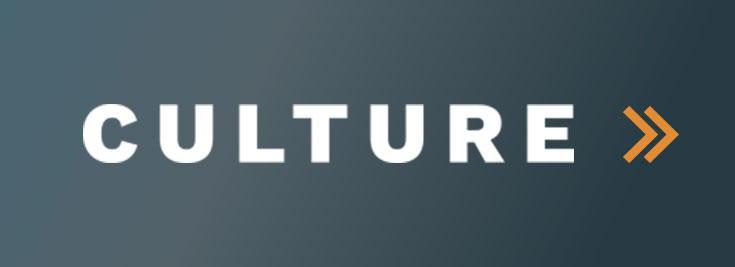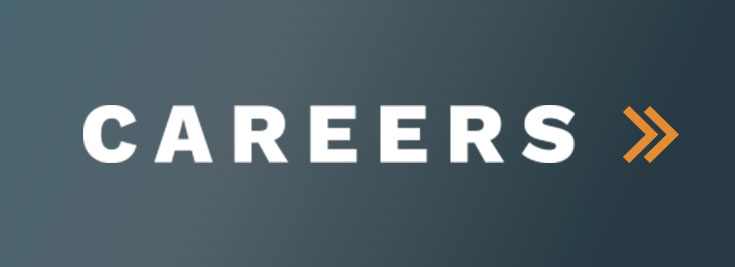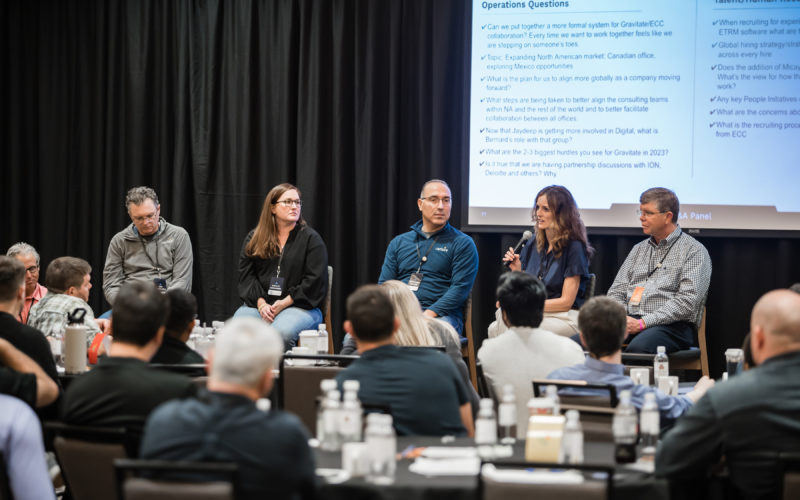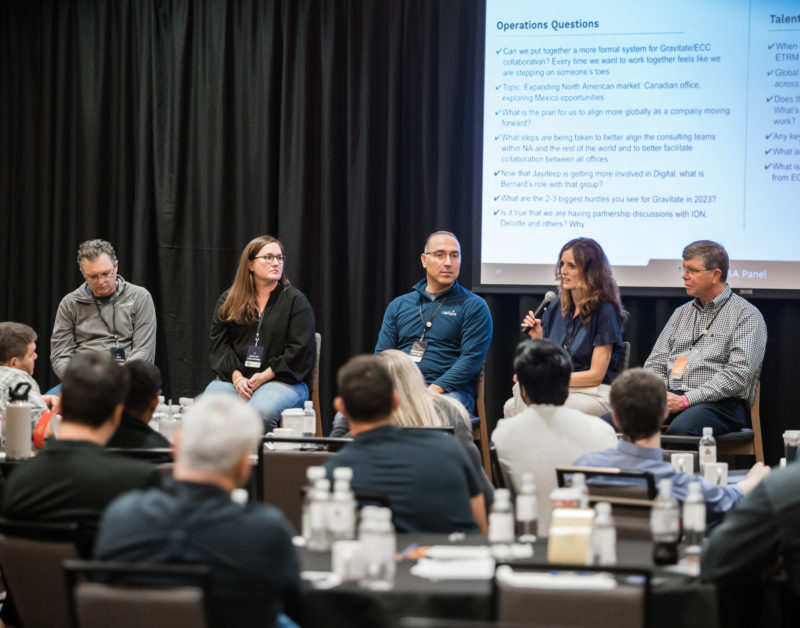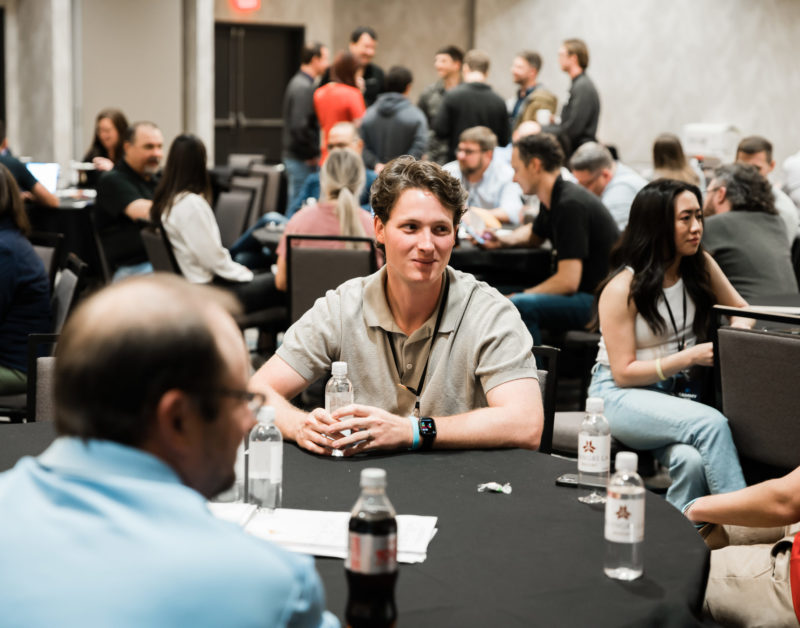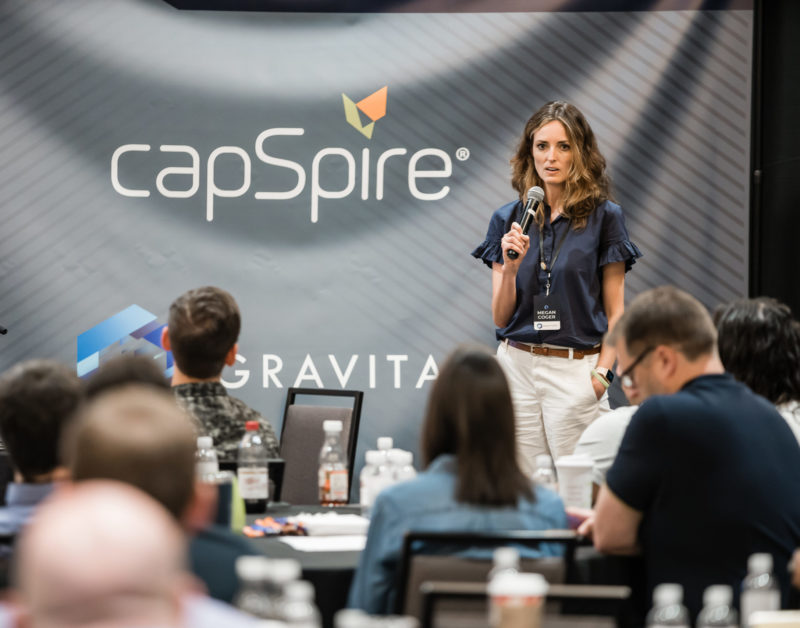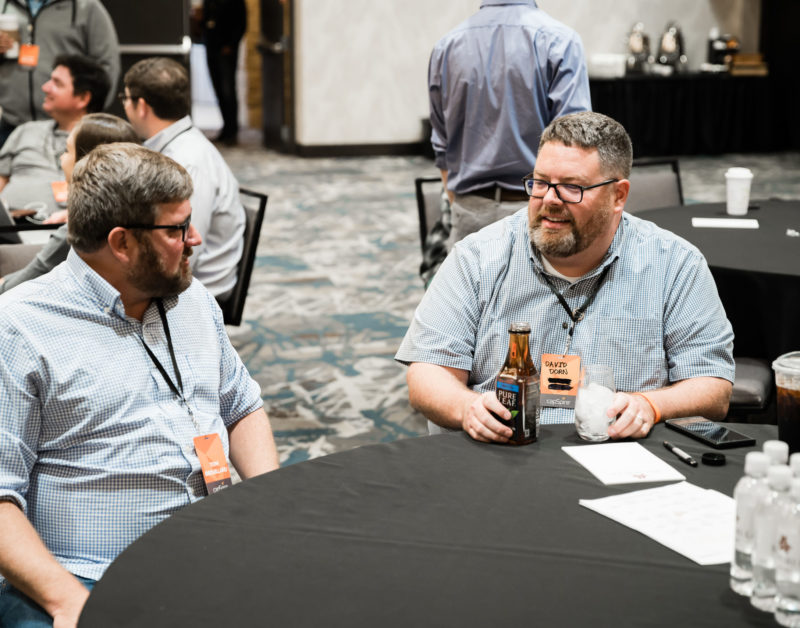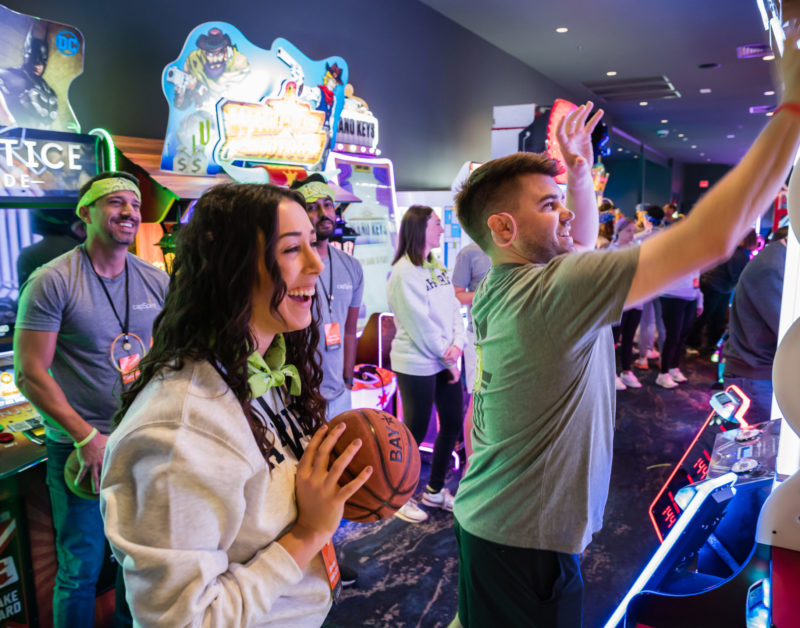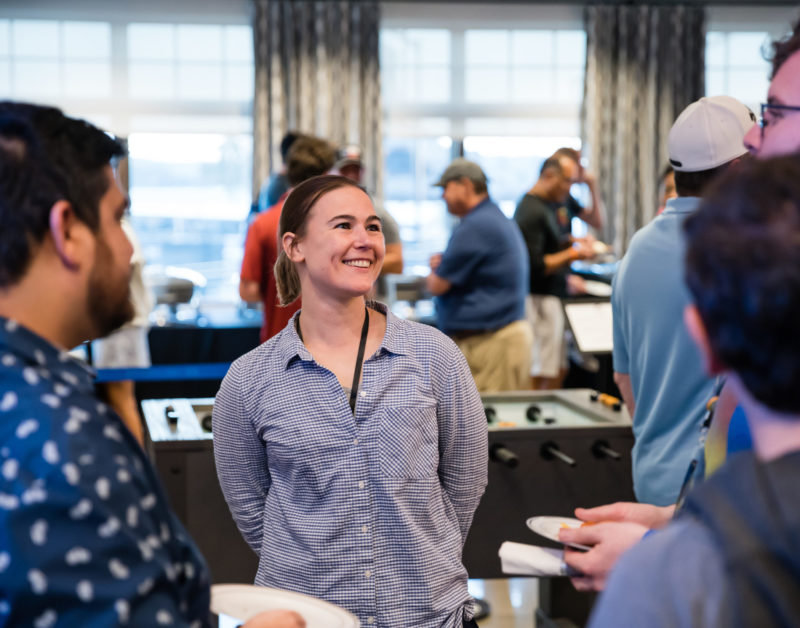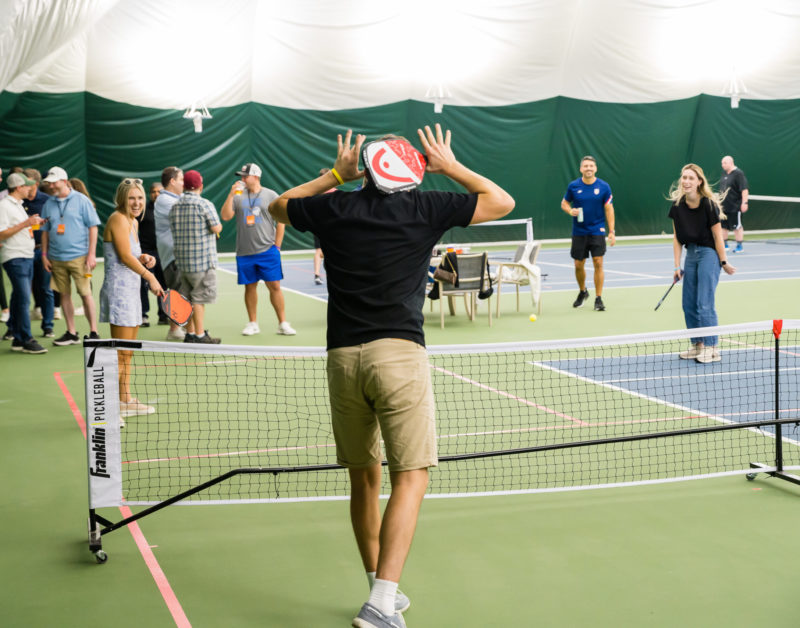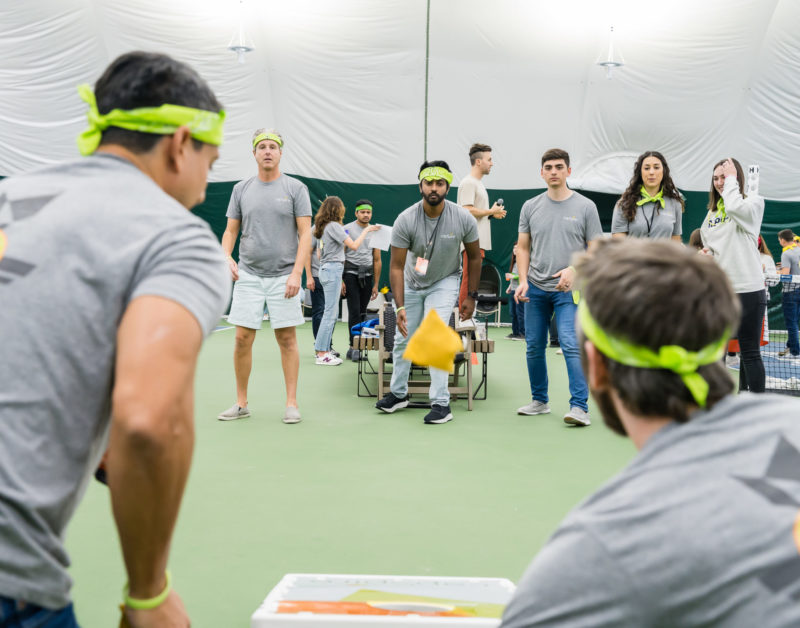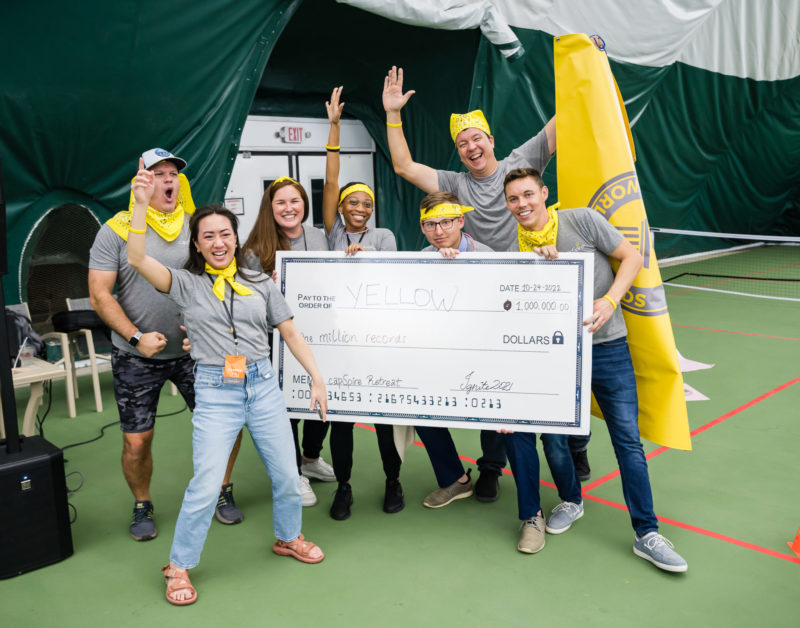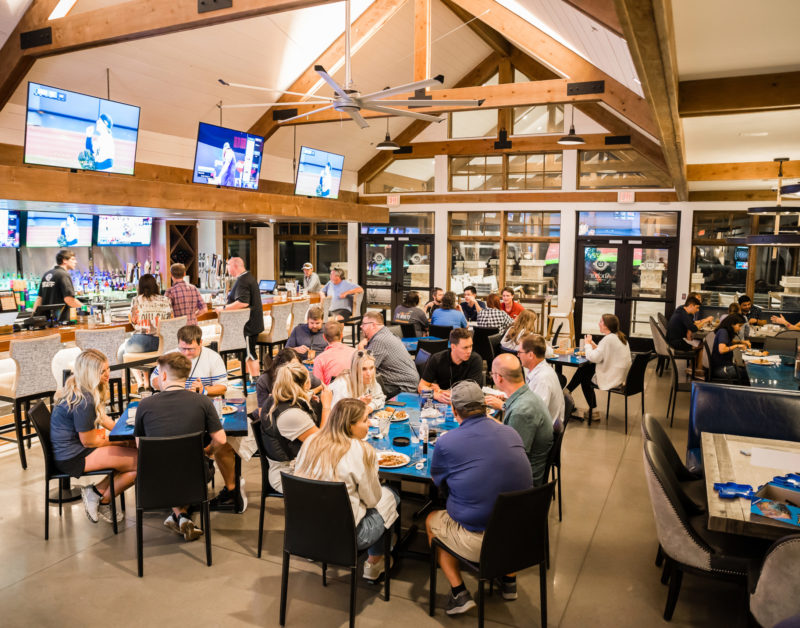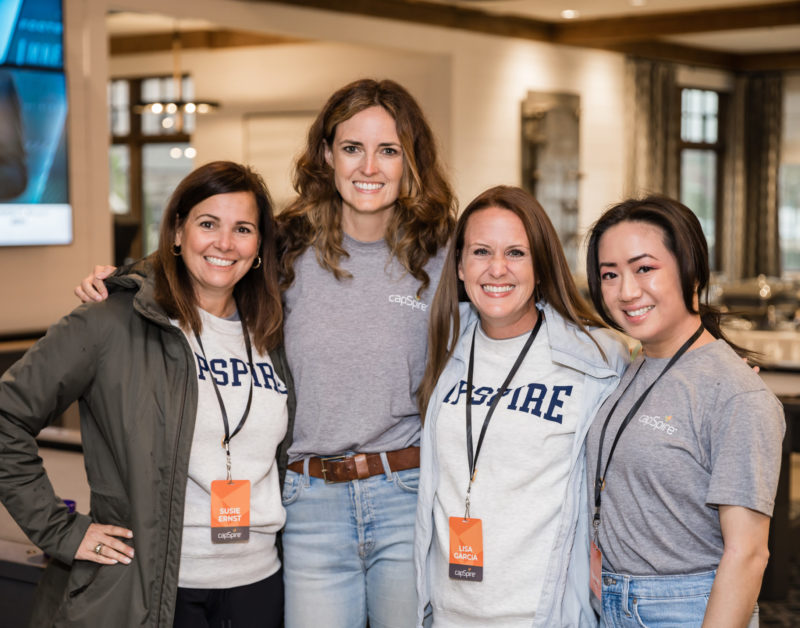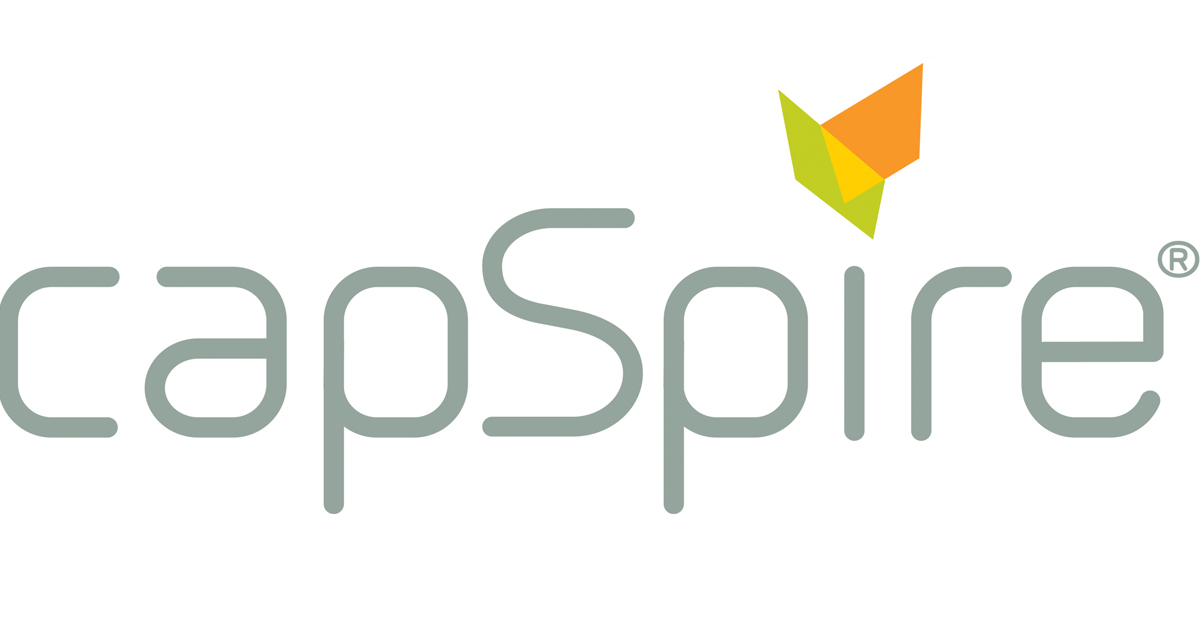Overview:
- Megan Coger, Director of People at capSpire, is celebrating her 10-year anniversary with the company this year.
- As the organizer of capSpire’s wildly popular annual retreat, Megan has learned over the years about what leads to a successful company event.
- Here, Megan shares her insight about how to make events fun, productive, and inclusive—and demonstrates what sets capSpire apart.
capSpire has long been celebrated for our unique, people-first culture. Nowhere is this culture on greater display than our annual company retreat.
Company retreats can be a drudgery, because they’re often large, overwhelming, and forced. People feel like they have to be there because “this is how it’s always been done, so here we go and let’s just get through it.” There are tons of rules. Few people are genuinely excited. Honestly, the whole thing feels kind of cheesy.
That’s far from the capSpire retreat experience. At our retreat, our team members actually want to be there. Everyone genuinely likes each other and is able to make meaningful connections. There are no rules in place about activity participation or not venturing off-site, and yet our team tends to stay together at the retreat by their own choice.
This atmosphere, authenticity, and level of engagement can’t be fabricated or forced. It’s the type of magic that every company wants to achieve and every employee wants to experience, but few know how to attain it.
Megan Coger, Director of People at capSpire and long-time organizer of the annual retreat, has played a significant role in reinventing what a corporate event can be. As she celebrates her 10-year anniversary with capSpire, she has had a lot of time to experiment with what works and perfect her craft.
Here are her thoughts on how to pull off a fun, productive, eagerly anticipated, people-centric, and cringe-free event:
- Tailor your event to the personalities on your team.
Consider the different personalities on your team—how they prefer to work and interact with others, what they enjoy and consider fun or interesting, and how you can meet their needs.
First, research your attendees. For example, at capSpire we rely on personality assessments like the Meyers-Briggs and Enneagram to understand our team members. What we’ve discovered is that many of our people lean toward introversion, meaning that they likely need:
- Opportunities to interact in smaller groups
- Activities designed to help build deeper relationships with teammates throughout the organization
- Multiple options for activities
When you know how your people operate, you can plan an event that gives everyone an opportunity to have a good experience, rather than forcing them into a situation in which they feel awkward or uncomfortable, or strong-armed into doing something.
- Create opportunities for real connection.
In this post-COVID, hybrid work era, use this valuable time at a retreat for things you can’t do well over a video call. For us, this includes bringing people together at a more personal level.
At capSpire, our retreat is laser focused on cultivating meaningful connections and relationships, and building camaraderie. Examples of what we do:
- At the start of the retreat, use fun and completely random ice breakers as a way to learn different facts about each other.
- Give people conversation starter topics.
- Offer a variety of activities in which people can get to know each other. We’ve found that people build relationships more easily if they participate in an activity together, rather than just talk. At this year’s retreat, we had a pickleball tournament.
- Have a variety of social activities in which it’s easy to engage (or not, if you prefer to just observe).
“We plan our activities with a lot of intention. You can’t just shove people in a room together and tell them to get to know each other. We really think through the activities we provide, along with their timing, pacing, and ease of participation,” says Megan.
Furthermore, we seek to avoid that awkward and anxious feeling many of us experience when we first enter a room full of people we don’t know. That’s why we help our team members “find their people.”
At the start of the retreat, we use an algorithm tool to randomly divide everyone into small groups of about 10 with a mix of roles, levels, and geographic locations so our team members can get to know others from different parts of the organization and other cities—especially since our company is so dispersed. Our goal is to broaden perspectives of the company and expose colleagues to other roles and areas of specialty.
There’s a great social benefit to these smaller groups, which last for the duration of the retreat. We sit with our assigned teams during the large company meetings, compete with them during games and activities, and attend parties and events together. This way, no one feels left out, wonders where they should sit, or worries about finding their niche at the retreat. It’s a pre-selected, ready-to-go group of friends, and it’s incredibly effective at forging bonds between colleagues who may not have a chance to interact otherwise.
“People enjoy these smaller groups so much. It’s at the point where, now, some of us get disappointed if they end up sitting with too many people they already know,” says Megan. “Seeing new relationships and bonds form is really special.”
- Be inclusive and equitable.
In addition to helping everyone feel included and part of a group, we also make sure that there’s no separation of leaders. Team members of all different roles, at all levels of the organization, are spread out and incorporated within these smaller groups. Nobody is “too good” to mingle with colleagues and participate in activities. We’re all in it for the fun of working together and getting to know each other.
- Mix large and small group activities.
Once we get through our welcome party—announcements, icebreakers, and awards—the second day of the retreat brings everyone together to discuss the future direction of the business and strategies for different parts of the organization. There’s also a leadership panel with Q&A.
We view larger meetings as an opportunity for everyone to hear about our company’s direction straight from the top, in an honest and straightforward manner. It sets the tone, at a high level, for the next year. This is also a great time to get team members to participate and contribute, not just listen. That’s what we do at capSpire—we value ideas, innovation, and feedback, not dry, one-way speeches. We’re a bottom-up culture—you never know from where the next big “aha” moment is going to appear.
However, we also divide up into smaller breakout groups throughout the retreat as well because:
- Not everyone thrives in a large-group setting or feels comfortable speaking up. Some people prefer a more intimate setting.
- Large meetings aren’t always conducive to diving into a topic in significant detail. We want specific teams within the same area of specialty to connect, focus on more granular topics, and enable more in-depth discussion.
- Embrace traditions
It’s important to identify and develop those special moments that everyone eagerly anticipates each year. At capSpire, our beloved traditions are the end-of-retreat party, which is hosted by the previous year’s graduates of the capSpire Ignite program, and recognition of milestone anniversaries.
For Ignite graduates, successfully completing the mock implementation of a commodity trading and risk management (CTRM) system isn’t the end of their capSpire initiation.
The real test of whether they have what it takes to make it at capSpire is the party on the last night of the retreat—their first anniversary at capSpire. Their party-hosting responsibilities involve selecting a theme, designing themed t-shirts for everyone at the company to wear, and planning a large, company-wide activity. This year, the theme was Guinness Book of World Records.
At capSpire, we also like to celebrate the important milestones of our people during our annual company retreat. We acknowledge team members who have reached the five-year mark with a special award. But at the 10-year milestone, we go all out.
At the induction ceremony, all current members of the 10-Year Club don their varsity sweaters marked with a gold X (the Roman numeral for 10). To the sounds of cheers and applause, they gift new inductees into the 10-Year Club with sweaters of their own and a trophy. Then the 10-Year Club inductees perform karaoke of a song from a decade ago when they started at capSpire. In 2022, that song was “Call Me Maybe” by Carly Rae Jepsen.
“Truly, honoring our long-term team members who have dedicated so much to capSpire is one of the most meaningful moments at our retreat,” says Megan.
- Have a foundational plan in place, but enable people to experience the event in their own way.
It’s good to have a structure in place—but within the retreat agenda, allow for enough flexibility for people to customize the experience and make it enjoyable for themselves. In this way, people can morph the retreat into whatever they want it to be. It’s like a live-action “choose your own adventure.”
We set out lots of different activities to challenge people in different ways, and let them gravitate toward the activities that pique their interest and the people they relate to best. For example, we have puzzles for mental challenges or different physical challenges ranging from basketball hoop games to Ping-pong and wrapping spools of yarn around teammates.
It’s ok for some activities to not have significant meaning, to exist merely for the sake of getting people to collaborate and converse. The genuineness of being able to participate how you want removes the cringe factor.
Our attitude is: whatever you prefer, there’s an option. And you’ll never see more creativity individuals than people coming together on their own initiative and trying to figure out a challenge.
When you put it all together, these are six great reasons why capSpire is consistently selected as a best place to work.
Does this sound like the type of team you want to be part of? Maybe you’re a fun-loving, challenge-oriented problem solver who’s looking to join us at our next retreat. We encourage you to learn more about us and contact us with any questions.
